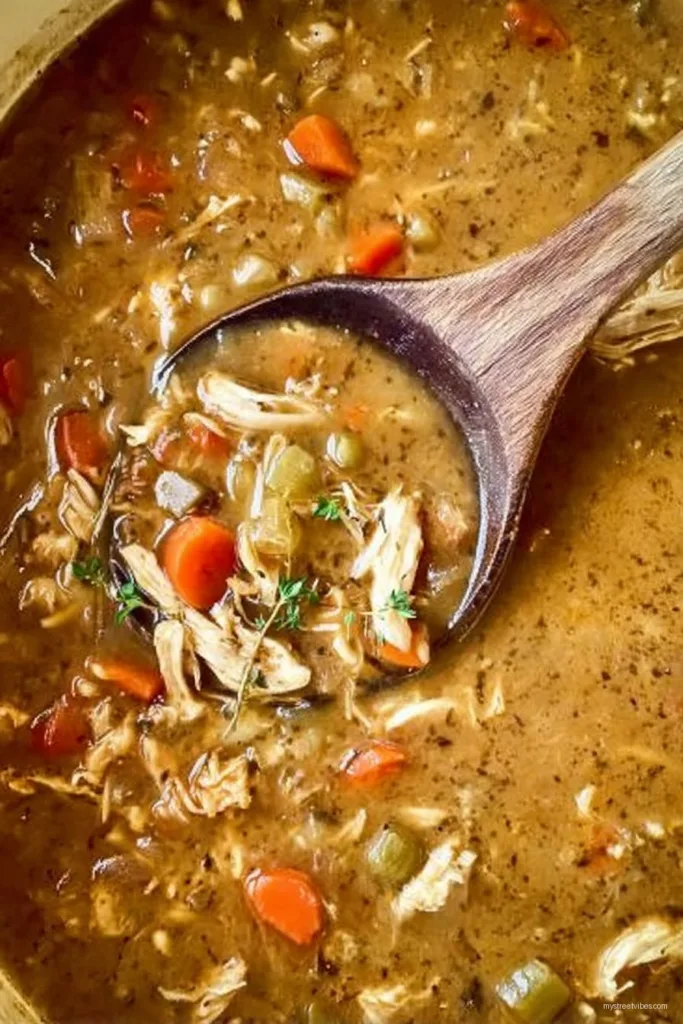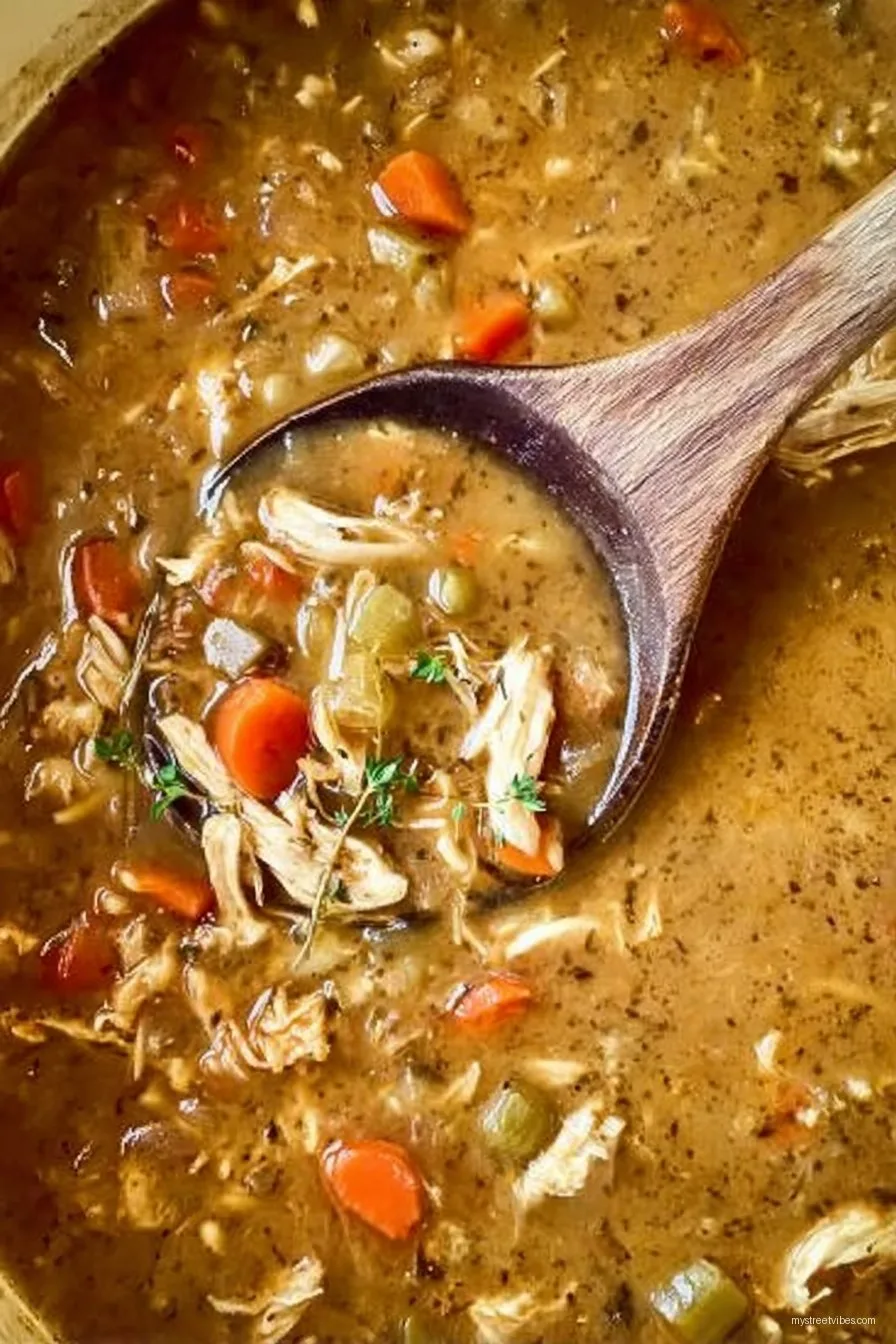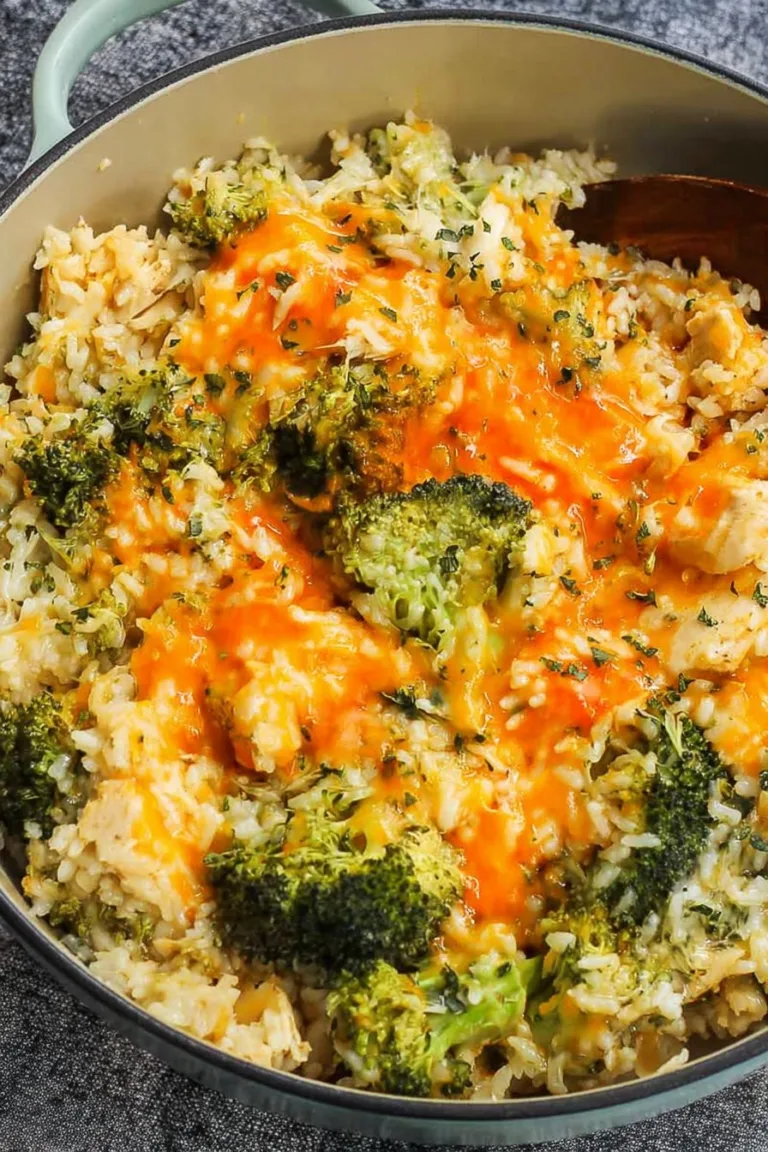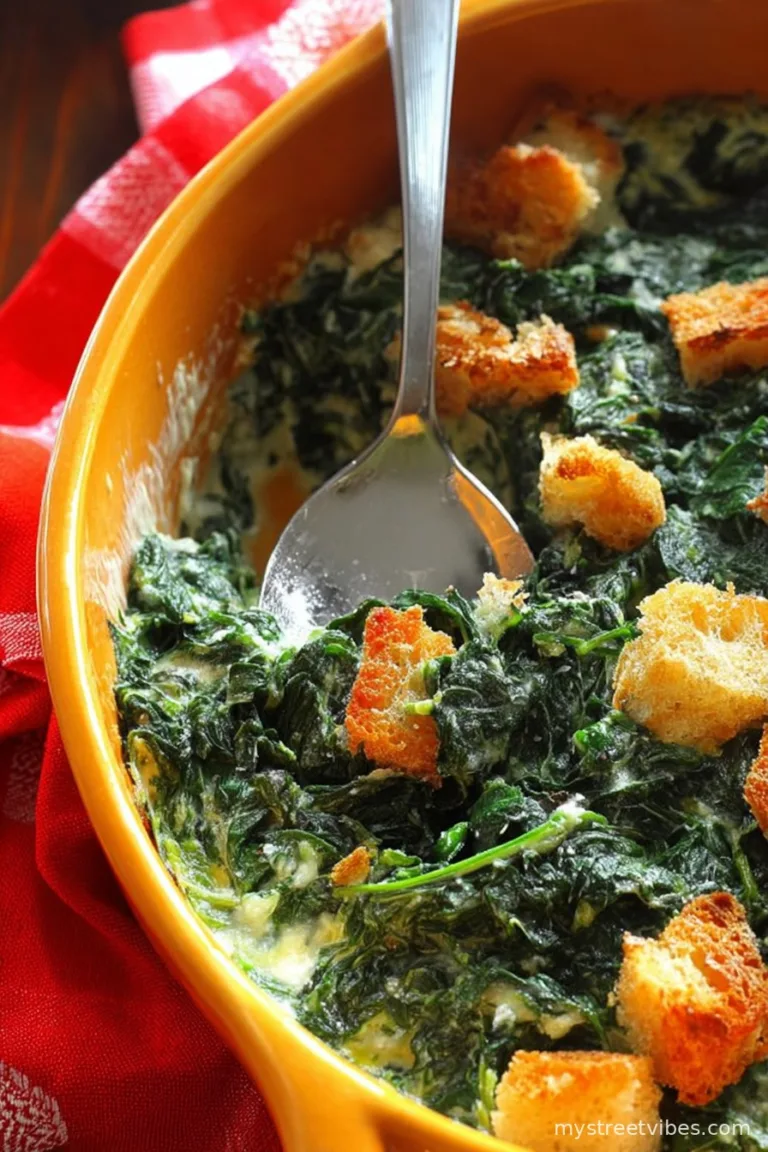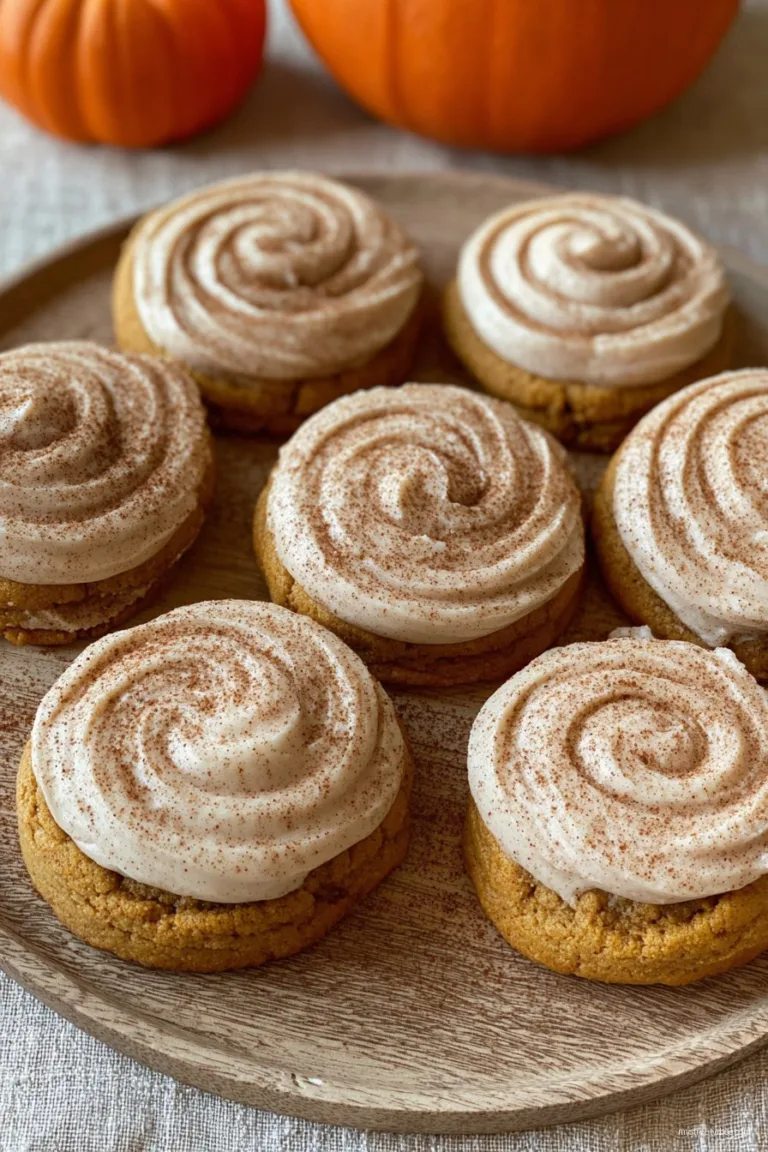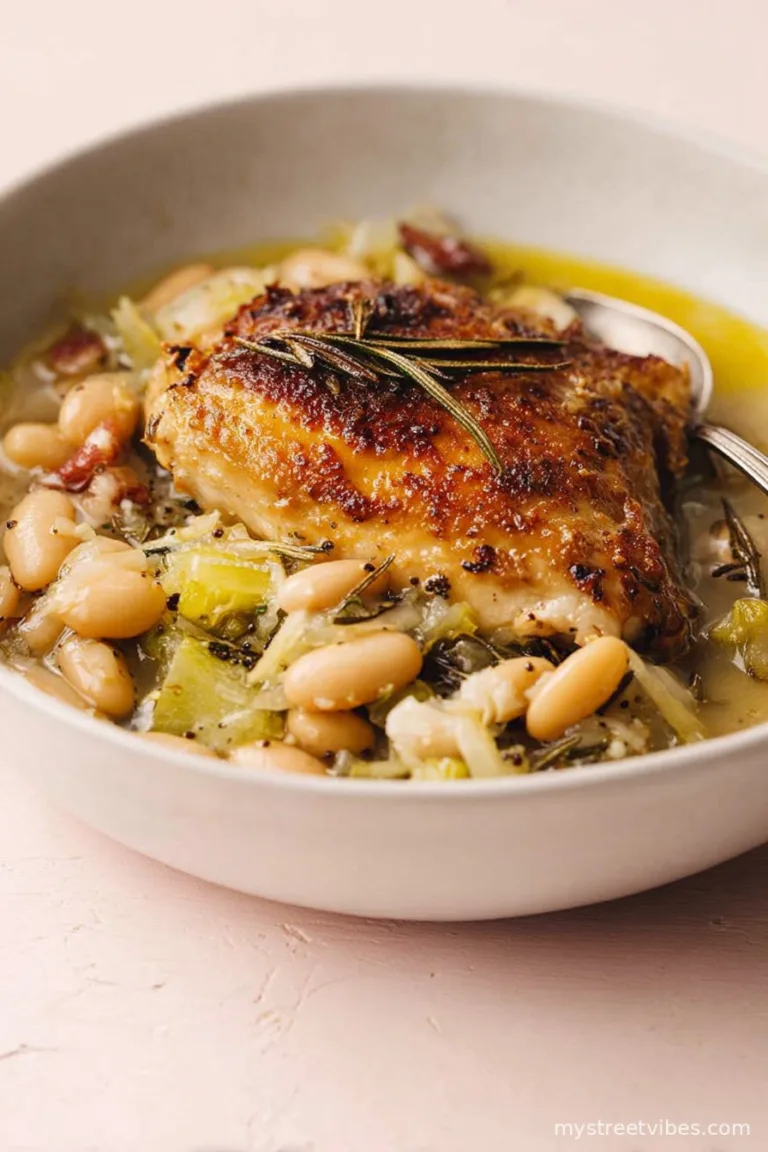Okay, let me set the scene: a rainy Tuesday, socks nowhere to be found, everyone around here feeling a bit “meh”—so what do I do? I dig out my biggest pot (which honestly, barely fits in my sink) and make chicken noodle soup. Honestly, I’ve been making some version of Homemade Chicken Noodle Soup Recipe since I tried to impress my uni flatmates—except now I’ve learned not to let the noodles turn to complete mush (let’s just say, texture matters!). Sometimes the soup ends up more like a stew because I get carried away with the noodles, but you know, nobody ever complains.
Why I Make This on Repeat
I make this when we need cheering up, or when there’s leftover rotisserie chicken staring me down in the fridge, or—real talk—when I just want something that doesn’t come out of a can. My family basically inhales this soup (sometimes I have to guard the pot). When my daughter had braces, this soup was her MVP; she could eat it without complaining, which was a minor miracle. Oh, and sometimes I forget the parsley; no one noticed. If you’re worried you’ll mess it up, please, I’ve forgotten a lot more and it’s always tasty in the end!
So, What Goes In? (And What Could)
- 2-3 chicken breasts (but thighs are juicier; sometimes I just shred up pre-cooked chicken if I’m in a rush)
- a glug of olive oil (my grandmother swore by the cheap stuff and honestly, can’t taste the difference!)
- 3 carrots, sliced up thin or not, up to you
- 2-3 celery stalks, chopped (skip if you hate celery—my mate Dana does; it’s fine, I promise)
- 1 big onion, chopped, or those pre-chopped packets if you’re feeling lazy
- 3-4 garlic cloves, smashed (less if socialising, more if hiding from vampires)
- about 8 cups chicken stock/broth (store-bought works; I tend to water it down)
- 2 bay leaves (if I can find them behind the spices, otherwise skip)
- a small handful fresh parsley, chopped (or a tablespoon dried; not a dealbreaker if absent)
- Salt and pepper, to taste (and a dash of paprika if you’re feeling feisty)
- 2 cups egg noodles (or any pasta; I once used fusilli, my daughter was appalled, but it tasted fine!)
Alright, So Here’s How I Do It
- First off: Heat the olive oil in your big pot. Toss in the carrots, celery, and onion. Cook ‘em on medium heat for about 5-ish minutes till they start to soften. Actually, I usually add the garlic partway through—just don’t burn it; burnt garlic is a smell nobody wants filling the house.
- Time for the chicken: If using raw chicken breasts/thighs, plop them in whole, then pour over the chicken stock. That’s your spa day for the chicken. If you use shredded pre-cooked chicken, just wait and add it later, otherwise you’ll get chalky bits.
- Throw in bay leaves, a decent pinch of salt, and a crank of pepper. Bring it all to a nice simmer. (This is when I usually forget something, so double check your ingredients now!)
- Simmer away for about 20-25 minutes or until the chicken is cooked through and easy to shred. If you started with leftover cooked chicken, just simmer the veg and broth for about 10 mins and add the chicken near the end; it’ll heat up fast.
- Fish out the chicken, let it cool slightly (burned my hands a few times, you’d think I’d learn), shred it with a couple forks, and toss it back in the pot.
- Toss in the noodles—pro tip: don’t walk away here or they’ll turn to glue. Cook for maybe 7-8 minutes (or check the packet, but taste one a minute early; nobody likes soggy noodles unless it’s lunch at your nan’s and even she secretly hated them).
- Stir in the parsley, adjust seasoning, and pull out those bay leaves (honestly, I’ve served soup with bay leaves in before, it’s not the end of the world!).
What I’ve Learned the Hard Way (Notes from My Kitchen Lab)
- If you forget to sauté the veggies first, it’ll still taste fine, just a bit more homely and less ‘wow’.
- You absolutely can use leftover roast chicken or even turkey, especially after holidays; just toss it in near the end.
- I think it tastes better the next day, but only if the noodles stay firm—otherwise, you get chicken noodle porridge (still tasty, not pretty).
Tried-and-Not-So-True Variations
- I once added a squeeze of lemon at the end (surprisingly fresh—kind of like Bon Appetit suggests) and now I sometimes do it when I’m feeling fancy.
- Egg noodles are classic, but rice is great if you’re out of pasta. Alphabet pasta is fun, but they fall apart quick!
- Coconut milk sounded like a good idea once. It…wasn’t. (Maybe it works for others, just not my cup of soup!)
What If You Don’t Have the Right Gear?
Big pot is easiest, but I’ve 100% made this in a cheap soup pan; just be careful—no boil-overs. If you only have a saucepan, halve everything (learned that the messy way).
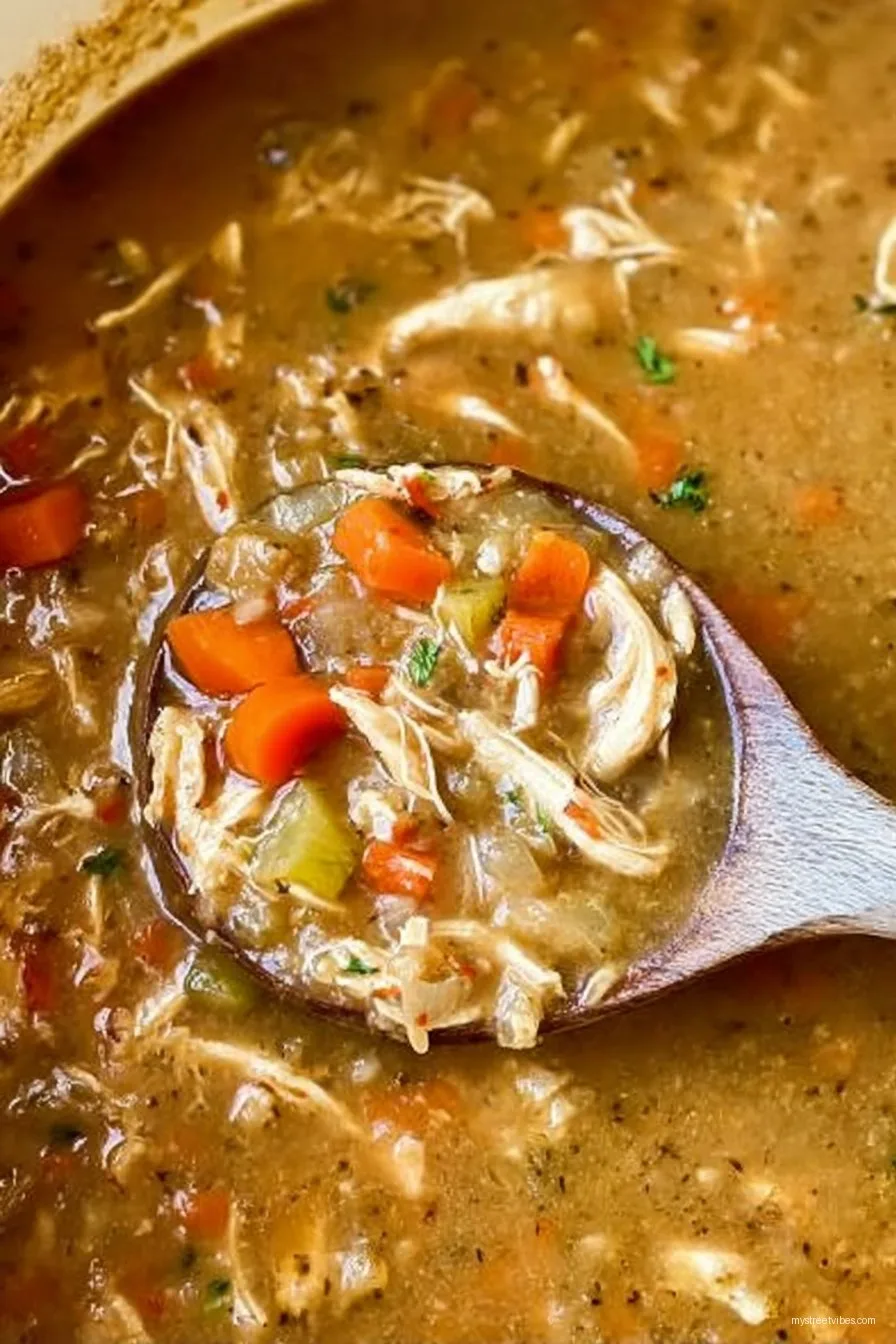
Storing It (Or Trying To…)
Keep leftovers in an airtight container in the fridge—good for about three days, though honestly, in my house it never lasts more than a day! Freezes well minus the noodles (they get weird and soggy); add cooked noodles fresh when reheating.
Here’s How I Like to Serve It
Big bowls, extra cracked pepper on top, maybe some soda bread (living in Scotland for a bit made me a convert), or sometimes just toast if that’s all we’ve got left. My son dunks grilled cheese on the side—honestly, it works.
Lessons Tried (Often the Hard Way)—My Pro Tips
- I once tried rushing the veggie sauté and ended up with weirdly crunchy onions. Not recommended.
- Bunging in all the noodles at once makes leftovers tricky; I now cook half in the soup and the rest separately if I think there’ll be any left (there rarely is!).
- Don’t skip seasoning at the end—taste, then salt again if needed. Sometimes the broth is bland and needs a little TLC.
Got Questions? (Actual Real-Life Ones!)
- Can I use store-bought rotisserie chicken? Absolutely. I do this probably half the time. Just add it at the end so it doesn’t get stringy.
- How do I keep noodles from going mushy? Easiest: Cook them separate, add them to the bowl just before serving. Sometimes I forget, but it’s not the end of the world.
- Can I make this vegetarian? Sure—use veg stock and swap chicken for extra beans or tofu. Never done tofu in this but someone online swears by it (see Cookie and Kate’s version for inspo).
- Do you really need fresh parsley? Nah! Dried is fine, or skip it. Or use dill if you like that. To each their own, I say.
- Is this freezer-friendly? It is, but only without the noodles. They get a bit…gluey. Add fresh ones when you reheat for best bowls.
Anyway, now I’m hungry. Sorry if any of this rambled—a bit of stream-of-consciousness is part of the magic. If you give it a go, let me know; you never know what tricks I’ll have picked up by next week!
Ingredients
- 2 tablespoons olive oil
- 1 medium onion, diced
- 3 cloves garlic, minced
- 3 medium carrots, sliced
- 2 celery stalks, sliced
- 8 cups low-sodium chicken broth
- 2 cups cooked chicken breast, shredded
- 2 cups egg noodles
- 1 teaspoon dried thyme
- 1 bay leaf
- Salt and pepper, to taste
- Fresh parsley, chopped (for garnish)
Instructions
-
1Heat olive oil in a large pot over medium heat. Add diced onion and cook for 3-4 minutes until softened. Stir in minced garlic and cook for 1 minute more.
-
2Add carrots and celery to the pot. Cook for 5 minutes, stirring occasionally, until the vegetables begin to soften.
-
3Pour in the chicken broth and add dried thyme, bay leaf, salt, and pepper. Bring to a boil, then reduce heat and simmer for 15 minutes.
-
4Add cooked chicken and egg noodles to the soup. Simmer for an additional 10-12 minutes until the noodles are tender and the chicken is heated through.
-
5Discard the bay leaf. Taste and adjust seasoning as needed. Serve hot, garnished with chopped fresh parsley.
Approximate Information for One Serving
Nutrition Disclaimers
Number of total servings shown is approximate. Actual number of servings will depend on your preferred portion sizes.
Nutritional values shown are general guidelines and reflect information for 1 serving using the ingredients listed, not including any optional ingredients. Actual macros may vary slightly depending on specific brands and types of ingredients used.
To determine the weight of one serving, prepare the recipe as instructed. Weigh the finished recipe, then divide the weight of the finished recipe (not including the weight of the container the food is in) by the desired number of servings. Result will be the weight of one serving.
Did you make this recipe?
Please consider Pinning it!!
